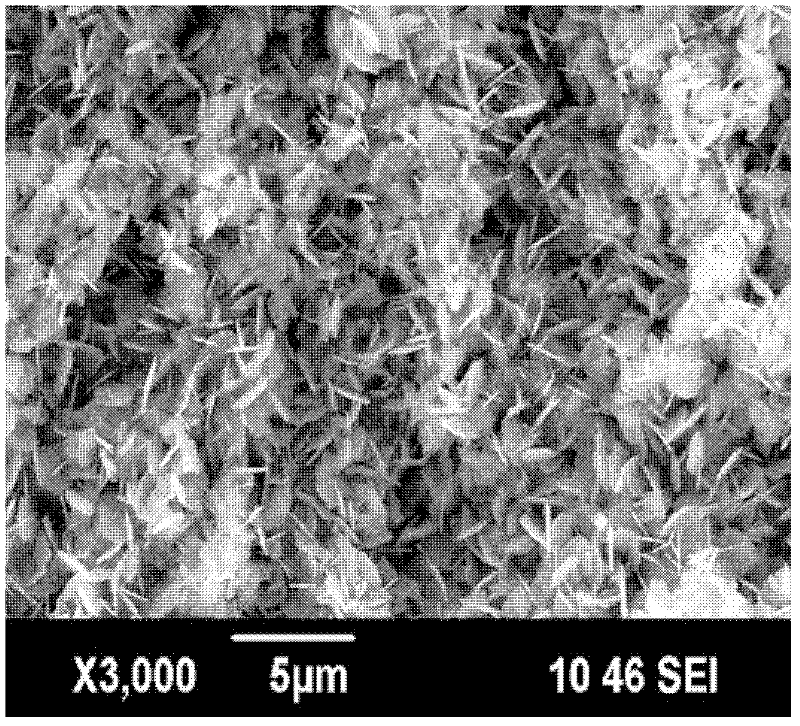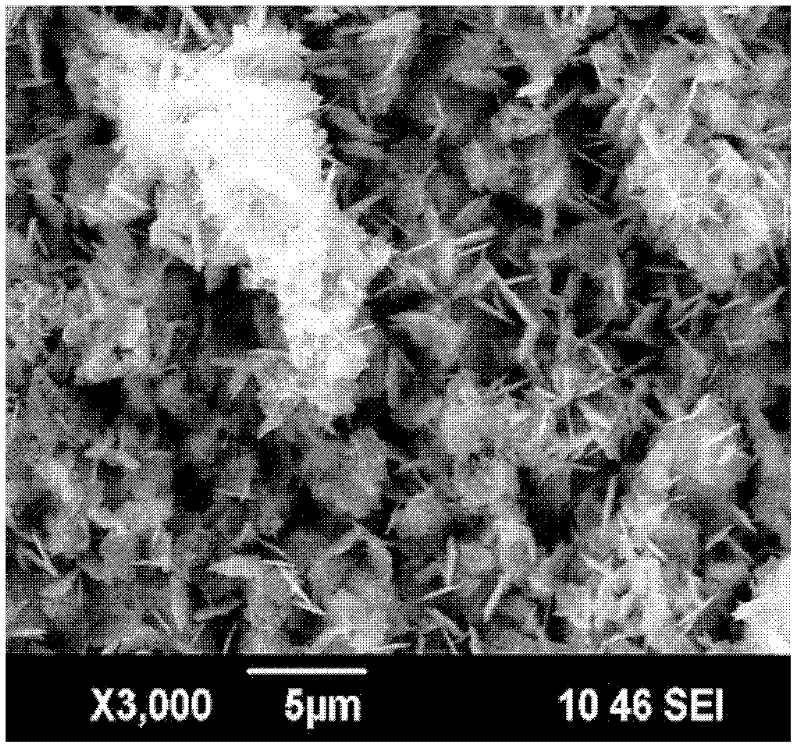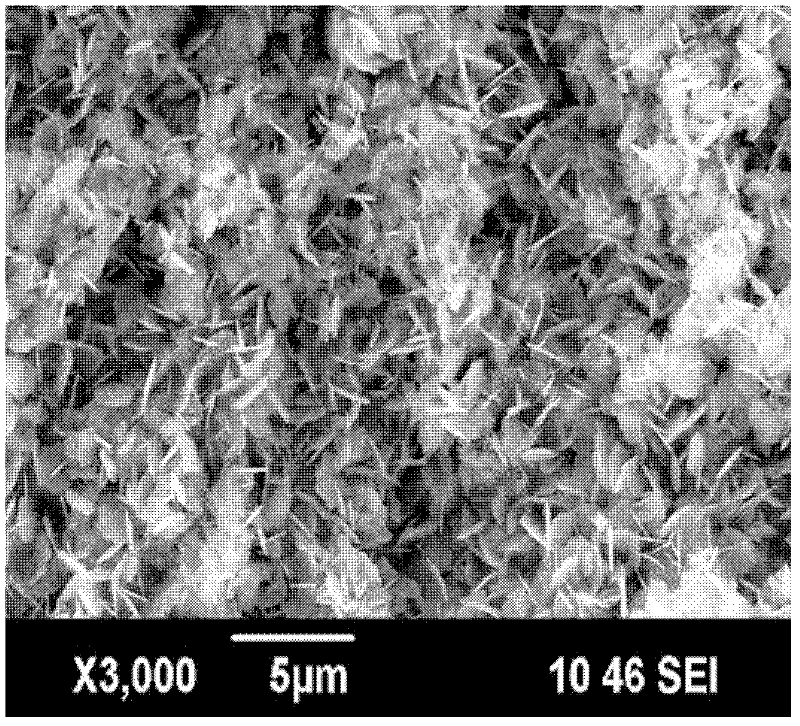Electrochemical method for preparing super-hydrophobic surface on copper substrate
A superhydrophobic surface, copper matrix technology, applied in the field of electrochemistry, to achieve the effect of simple method, good hydrophobic performance and high efficiency
- Summary
- Abstract
- Description
- Claims
- Application Information
AI Technical Summary
Problems solved by technology
Method used
Image
Examples
Embodiment 1
[0025] Step 1. Grind two pieces of copper substrates with a size of 50mm×25mm×1.5mm in turn with water sandpaper of 800 grit and 1200 grit to remove the oxide layer on the surface of the copper substrate, and then wash the polished copper substrate with distilled water and anhydrous Rinse with ethanol, then dry with a hair dryer for later use;
[0026] Step 2: Add 7g of potassium hydroxide and 1.78g of potassium persulfate to absolute ethanol, set the volume to 150mL, and stir evenly to obtain a solution with a concentration of potassium hydroxide of 0.83mol / L and a concentration of potassium persulfate of 0.044mol / L A;
[0027] Step 3: Add 0.5 mL of fluorosilane dropwise into 30 mL of absolute ethanol, and stir until the fluorosilane is completely dissolved to obtain solution B;
[0028] Step 4. Place the solution A in the step 2 in the electrolytic cell as the electrolyte, and connect the two copper substrates dried in the step 1 as the anode and the cathode to the positive...
Embodiment 2
[0033] This example is the same as Example 1, except that the low surface energy material used is myristic acid, stearic acid or lauric acid.
Embodiment 3
[0035] Step 1. Grind two pieces of copper substrates with a size of 50mm×25mm×1.5mm in turn with water sandpaper of 800 grit and 1200 grit to remove the oxide layer on the surface of the copper substrate, and then wash the polished copper substrate with distilled water and anhydrous Rinse with ethanol, then dry with a hair dryer for later use;
[0036] Step 2: Add 6.3g of potassium hydroxide and 1.78g of potassium persulfate into absolute ethanol, set the volume to 150mL, and stir evenly to obtain a product with a concentration of potassium hydroxide of 0.75mol / L and a concentration of potassium persulfate of 0.044mol / L. Solution A;
[0037] Step 3: Add 0.5 mL of stearic acid dropwise into 30 mL of absolute ethanol, and stir until the stearic acid is completely dissolved to obtain solution B;
[0038] Step 4. Place the solution A in the step 2 in the electrolytic cell as the electrolyte, and connect the two copper substrates dried in the step 1 as the anode and the cathode to...
PUM
 Login to View More
Login to View More Abstract
Description
Claims
Application Information
 Login to View More
Login to View More - R&D
- Intellectual Property
- Life Sciences
- Materials
- Tech Scout
- Unparalleled Data Quality
- Higher Quality Content
- 60% Fewer Hallucinations
Browse by: Latest US Patents, China's latest patents, Technical Efficacy Thesaurus, Application Domain, Technology Topic, Popular Technical Reports.
© 2025 PatSnap. All rights reserved.Legal|Privacy policy|Modern Slavery Act Transparency Statement|Sitemap|About US| Contact US: help@patsnap.com



